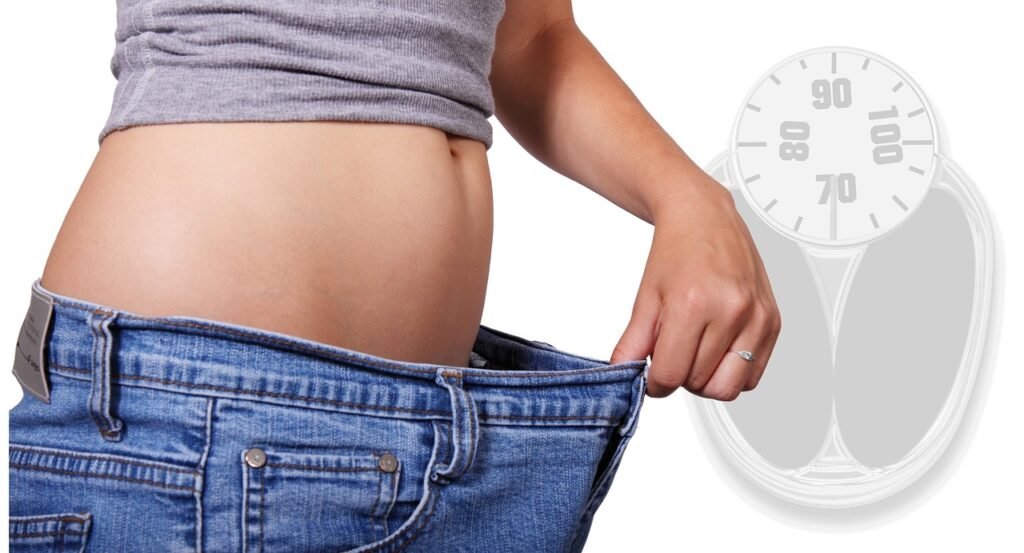Weight loss is a journey that varies from person to person, shaped by individual goals, body types, lifestyles, and medical histories. It can seem overwhelming to navigate the sea of information available, especially when you’re faced with conflicting advice, fad diets, and quick fixes. However, losing weight in a healthy, sustainable manner requires a balanced approach that integrates the right nutrition, exercise, mental health, and habits that align with your goals.
This comprehensive guide breaks down the essential elements of weight loss, helping you create a plan that works for you and your body. We’ll explore nutrition strategies, the science of metabolism, the role of exercise, behavioral tips, and more, to guide you toward a sustainable weight loss journey.
Table of Contents
- Understanding the Science of Weight Loss
- The Importance of a Caloric Deficit
- Choosing the Right Diet for Weight Loss
- A. Low-Carb Diets
- B. Intermittent Fasting
- C. Plant-Based Diets
- The Role of Exercise in Weight Loss
- A. Strength Training
- B. Cardio and Aerobic Activities
- Mental and Emotional Well-being
- A. Mindful Eating
- B. Overcoming Emotional Eating
- Tracking Progress and Staying Consistent
- The Importance of Sleep in Weight Loss
- Hydration and Its Role in Fat Loss
- Common Weight Loss Myths Debunked
- Long-Term Strategies for Maintaining a Healthy Weight
1. Understanding the Science of Weight Loss
At its core, weight loss comes down to a simple equation: calories in versus calories out. To lose weight, your body needs to burn more calories than it consumes, creating a caloric deficit. However, the process of losing weight is far from linear and involves a variety of biological, psychological, and environmental factors.
Metabolism and Weight Loss
Your metabolism plays a significant role in how efficiently your body burns calories. There are three main components to your metabolic rate:
- Basal Metabolic Rate (BMR): The number of calories your body needs to perform basic functions like breathing, circulation, and cell production.
- Thermic Effect of Food (TEF): The calories burned during digestion, absorption, and metabolism of food.
- Physical Activity: The calories burned through exercise and non-exercise activities like walking, fidgeting, and standing.
Understanding these components can help you tailor your approach to weight loss, as strategies that increase physical activity and improve metabolic efficiency can aid in the process.

2. The Importance of a Caloric Deficit
A caloric deficit is the cornerstone of any weight loss plan. In simple terms, you need to consume fewer calories than your body uses for energy. This forces your body to tap into stored fat for energy, leading to fat loss over time.
To determine your daily calorie needs, you can calculate your Total Daily Energy Expenditure (TDEE), which is based on your BMR and activity level. There are several online calculators that can help with this, but as a rule of thumb:
- To lose weight, aim for a 500–1,000 calorie deficit per day, which leads to a healthy and sustainable weight loss of 1–2 pounds per week.
While creating a caloric deficit is essential, it’s also crucial to do this sustainably by focusing on nutrient-rich, whole foods rather than simply cutting calories.
3. Choosing the Right Diet for Weight Loss
The weight loss industry offers no shortage of diets promising fast results, but not all diets are created equal. It’s essential to choose a diet that not only helps you lose weight but also promotes overall health and is sustainable for the long term. Here are three of the most popular approaches:
A. Low-Carb Diets
Low-carb diets, such as keto or Atkins, reduce carbohydrate intake and increase fat and protein consumption. These diets work by putting the body in a state of ketosis, where fat is used as the primary fuel source instead of carbohydrates.
- Pros: Low-carb diets are effective for rapid weight loss and reducing hunger. They can help with fat loss, particularly abdominal fat.
- Cons: They can be restrictive, leading to difficulties in long-term adherence. Additionally, these diets may not be suitable for everyone, particularly those with certain medical conditions.

B. Intermittent Fasting
Intermittent fasting (IF) involves cycling between periods of eating and fasting. Popular methods include the 16/8 method (fasting for 16 hours and eating within an 8-hour window) or the 5:2 method (eating normally for five days and significantly restricting calories for two days).
- Pros: IF can promote fat loss without muscle loss and is relatively easy to follow once your body adjusts. It also improves metabolic health.
- Cons: Not everyone responds well to fasting, and some people may experience increased hunger or fatigue. It can also lead to overeating during eating windows if not done mindfully.
C. Plant-Based Diets
Plant-based diets emphasize whole, unprocessed plant foods, including vegetables, fruits, legumes, nuts, and seeds, while limiting or avoiding animal products. This approach can be an effective way to lose weight while also improving heart health and reducing the risk of chronic diseases.
- Pros: High in fiber and nutrients, plant-based diets are naturally lower in calories and fats. They promote long-term health and weight maintenance.
- Cons: People transitioning to plant-based diets may struggle to get enough protein or certain nutrients (like vitamin B12), requiring careful planning.
Ultimately, the best diet is one that fits your lifestyle, preferences, and long-term health goals.
4. The Role of Exercise in Weight Loss
While diet plays a more significant role in creating a caloric deficit, exercise is crucial for overall health, body composition, and improving metabolism. Exercise helps you burn additional calories, build muscle, and enhance fat loss, and it has other benefits such as improving mood and cardiovascular health.
A. Strength Training
Strength training (also known as resistance training) is essential for preserving and building lean muscle mass while losing weight. More muscle mass increases your BMR, meaning you burn more calories even at rest.
- Types of Strength Training: Weightlifting, bodyweight exercises (e.g., push-ups, squats), and resistance band exercises.
- Frequency: Aim for at least 2–3 strength training sessions per week, targeting all major muscle groups.
B. Cardio and Aerobic Activities
Cardio exercises, such as running, cycling, swimming, and walking, increase your heart rate and burn calories. These activities are highly effective for weight loss, especially when combined with a balanced diet.
- Types of Cardio: Steady-state cardio (maintaining a consistent pace) and High-Intensity Interval Training (HIIT), which alternates between intense bursts of activity and periods of rest.
- Frequency: For general health, aim for at least 150 minutes of moderate aerobic activity or 75 minutes of vigorous activity per week.

Incorporating a mix of strength training and cardio can optimize your weight loss results while improving overall fitness.
5. Mental and Emotional Well-being
Successful weight loss isn’t just about eating less and exercising more—it’s about addressing your relationship with food and understanding the emotional and psychological aspects of eating.
A. Mindful Eating
Mindful eating encourages you to focus on the experience of eating, paying attention to hunger and fullness cues, and enjoying food without distractions. It can help reduce overeating and improve your relationship with food.
- Tips for Mindful Eating:
- Eat slowly and savor each bite.
- Avoid eating while distracted (e.g., watching TV or using your phone).
- Listen to your body’s hunger and fullness signals.
B. Overcoming Emotional Eating
Emotional eating occurs when you eat to cope with stress, boredom, loneliness, or other emotions, rather than hunger. Identifying emotional triggers and finding alternative ways to cope, such as practicing stress-relief techniques (e.g., meditation, journaling, or physical activity), can help break the cycle of emotional eating.
6. Tracking Progress and Staying Consistent
Consistency is key to long-term weight loss success. Tracking your progress can help keep you accountable and motivated throughout your journey.
Ways to Track Progress:
- Weight and Measurements: Weigh yourself once a week and track body measurements (waist, hips, arms) to monitor changes.
- Progress Photos: Take monthly photos to visually track your transformation.
- Food and Activity Logs: Use apps or journals to log your meals, workouts, and other habits to identify patterns and areas for improvement.
However, it’s important not to get discouraged by small fluctuations in weight, as these can be influenced by factors like water retention or hormonal changes.
7. The Importance of Sleep in Weight Loss
Sleep is often overlooked but is a crucial component of weight loss. Poor sleep can lead to increased hunger, particularly for high-calorie, high-sugar foods, due to the impact on hunger-regulating hormones like ghrelin and leptin.
Tips for Better Sleep:
- Aim for 7–9 hours of sleep per night.
- Maintain a regular sleep schedule.
- Create a relaxing bedtime routine and reduce screen time before bed.
- Ensure your sleep environment is comfortable and conducive to rest.
Getting enough high-quality sleep can improve mood, energy levels, and overall well-being, which are critical for maintaining a healthy weight.
8. Hydration and Its Role in Fat Loss
Staying hydrated is important for many bodily functions, including digestion, metabolism, and fat loss. Drinking enough water can help suppress appetite, improve metabolism, and aid in the breakdown of fat cells.
- Tip: Drink a glass of water before meals to help control portion sizes and reduce overall calorie intake.
- Daily Recommendation: Aim to drink at least 8 cups (64 oz) of water per day, or more depending on your activity level and environment.
9. Common Weight Loss Myths Debunked
There are numerous weight loss myths that can derail your efforts. Let’s debunk some of the most common:
- Myth 1: All calories are equal. The quality of the calories you consume matters. Nutrient-dense foods like vegetables, lean proteins, and whole grains provide more health benefits than processed foods, even if they have the same caloric content.
- Myth 2: Carbs make you fat. Carbohydrates are not inherently fattening. The key is to focus on whole, unprocessed carbs like fruits, vegetables, and whole grains, and avoid refined sugars.
- Myth 3: You can spot-reduce fat. Fat loss occurs throughout the body, and you can’t target specific areas. A combination of a caloric deficit, strength training, and cardio is the best way to reduce overall body fat.
- Myth 4: You need to exercise for hours daily to lose weight. Short, intense workouts like HIIT can be just as effective for fat loss as long-duration cardio sessions.
10. Long-Term Strategies for Maintaining a Healthy Weight
Once you’ve achieved your weight loss goals, the next challenge is maintaining your new weight. Developing long-term habits that support a healthy lifestyle is key to preventing weight regain.
Strategies for Maintenance:
- Continue Monitoring: Keep tracking your food intake, activity levels, and weight regularly to stay on track.
- Balanced Diet: Don’t fall back into old eating habits. Focus on a balanced, nutrient-dense diet with occasional treats.
- Stay Active: Make physical activity a regular part of your life, whether it’s through structured workouts, hobbies, or recreational activities.
- Mindset: Focus on progress rather than perfection. If you experience weight fluctuations, get back on track without being too hard on yourself.
Final Thoughts
Losing weight is not about following the latest fad or chasing short-term results. Sustainable weight loss requires a balanced approach that includes a healthy diet, regular exercise, proper sleep, and mental well-being. Every individual’s journey will be different, but by understanding the principles of weight loss and making incremental, lasting changes, you can achieve and maintain your goals.
The key to success lies in consistency, patience, and developing a plan that works for you—one that fits your lifestyle, preferences, and needs.


